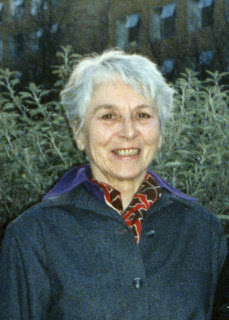“Confort à retardement” is John Ottman’s choreography created for France Geoffroy, a dancer and choreographer gaining recognition in Canada and abroad. The fact that Geoffroy is paraplegic defines the production, produced by her company Corpuscule Danse. Geoffroy was well on her way in her dance training when she had a life-defining accident at the age of seventeen, diving into the shallow end of a lake with disastrous results. (We learn all this in a short film, “Chrysallis”, directed by Véro Boncampagni, preceding the dance). Ottman’s piece captures Geoffroy and her partner in the work, able-bodied Tom Casey, as they navigate through the panoramas of sky and sea.
When I saw the production of “Confort” in an earlier incarnation during last summer’s Montréal Fringe Festival, the piece echoed with the intimacy of the connection between Geoffroy and Casey. It was, for me, a festival highlight, because not only was it visually striking, it was also an emotionally involving piece for the dancers. For the new expanded show presented at Tangente, Geoffroy and Montréal-based Ottman have brought new features to the piece that unfortunately seem forced. There’s some business at the start, with a lot of coming and going on both Geoffroy and Casey’s parts, as they prepare the stage for what the audience might anticipate is the show (setting up a sheet that will act as a screen, placing chairs, etc.). At a certain moment, Geoffroy, in her wheelchair, proceeds to recognize and acknowledge people in the house. In another context, this might bring a folksy element to a dance performance; here it just takes up time.
When the lights thankfully go down, but not out, and it appears the show will actually begin, there’s more smoke and mirrors. Apparently there’s to be a slide show of their travels, but there are problems with the remote control. Banter ensues about what’s going wrong with the device, yet it’s nothing more than filler. A lot of it is oddly mean-spirited, with Geoffroy effectively scolding Casey. Dialogue like, “It’s mycontrol!” or “I know how to use it!” seems petulant, not tongue-in-cheek whimsy. I started to cringe when we were told by an exasperated Geoffroy, “We had the same situation yesterday. Stay calm. Don’t panic.” These interventions short-circuit our appreciation of the Geoffroy-Casey connection — she comes across as a cruel control freak — and it denies the audience the possibility to metaphorically go for a ride with them.
Surprisingly, once the duo did get on with the real piece (the one I saw more or less in the summer), the manner of her performance soars — specifically how she and Casey, who is the epitome of gentle male support, listen to one another and intuitively connect. Touch figures prominently in the work, with Casey grasping Geoffroy’s underarms and spinning her in the chair, or he crawling onto the back of the chair in a horizontal hovering position, and she wheeling forward. When Casey rolls on the floor guiding the chair with his upper body, with Geoffroy sitting in relative stillness, there’s awe and surprise in the audience. When she somehow grasps the handles of the chair and he swings her back and around, I really felt the weight of her body one moment and her weightlessness the next.
There’s humour too, not only in their camaraderie, but their silly flying goggles and scarves are a sight. In many ways, the play between them suggests just how much work was done in studio probing the possibilities of new material. Ottman’s success with the piece demonstrates his flexibility in mounting different kinds of ideas, or categories of ideas, for able and disabled bodies. (Geoffroy refers to her work as integrated dance, for persons with reduced mobility and persons without handicaps.)
Geoffroy bravely — there’s no other word for it — finds abandon in the concise, natural gestures in her repertoire of movement, using her arms, neck and head with vivid and inspiring results. When, for instance, Casey prompts the chair to wheel about, she adds dynamic to this repeated phrase by gently articulating her eyes and facial muscles. I began imagining the greater internal dance going on in her body, and it’s in those fleeting movements, in the subtlest of gestures, that the poetry in the piece emerges. Another bonus: Mark Adam’s diffuse filmic images give depth and breadth to the work. Images of sky and sea cover the floor as well as the actual back screen. Depending on the element they are moving through — air or water — the colours change from a milky blue-white to darker shades of marine.
It’s too bad that the exigencies of the business of theatrical presentation often dictate the length of a work. Into that equation comes the question of judging what is worth the price of admission. Is a work of thirty minutes acceptable or is something an hour long more attractive? In the case of “Confort à retardement”, I sense the creative team felt the shorter Fringe Festival version needed more material. Knowing when enough is enough is another question altogether, and navigating those tricky waters is not only a measure of an artist’s inventiveness, but also their maturity.
Tagged: Contemporary, Mixed Ability, Performance, Montréal , QC





